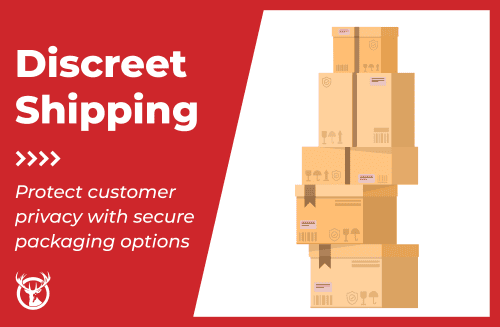An advanced shipping notice (ASN) is an electronic notification sent by suppliers to buyers about incoming shipments. This guide will cover how ASNs work, their benefits to logistics and inventory management, and how to seamlessly implement them into your business operations.
Key Takeaways
- An Advanced Shipping Notice (ASN) is an electronic message that tells buyers about shipment details and improves logistics and customer service.
- Electronic Data Interchange (EDI), specifically EDI 856, is required to standardize ASNs and reduce errors in shipment processing.
- Implementing ASNs requires planning, communication with trading partners, and staff training to overcome challenges and maximize the benefits.

What is an Advanced Shipping Notice (ASN)
An Advanced Shipping Notice (ASN) is an electronic message sent by a supplier to a buyer about an upcoming shipment. This advance ship notice keeps buyers informed about deliveries and allows them to receive goods efficiently. ASNs usually contain important information such as order number, expected arrival time, delivery location, pallet count, packaging type, and product details.
Detailed shipment information from ASNs allows businesses to manage inventory better and have smooth, error-free receiving processes. Imagine knowing exactly when your shipment arrives, what’s in it, and how it’s packaged—this level of tracking number and tracking details can make a big difference to your supply chain.
Electronic Data Exchange (EDI) & ASNs
Electronic Data Interchange (EDI) is the technology that enables ASNs. EDI is a standard way of exchanging business information electronically to create and send ASNs. This integration simplifies wholesale shipping to B2B customers and gives them timely and accurate shipment updates.
Standardized ASN formats through EDI make communication smoother and collaboration with trading partners easier. Clear communication and protocols between suppliers and buyers are key to a successful ASN implementation.
What is EDI 856?
EDI 856 is the specific standard for the Electronic Data Interchange Advanced Shipping Notice. It is based on the ANSI X12 format, which standardizes electronic transactions to ensure consistency and accuracy. This document must contain all required segments and data elements, such as the PRO number and bill of lading, to capture and communicate all relevant information.
The EDI 856 document is key to providing detailed and structured information about a shipment, enabling seamless integration and processing across different systems. EDI 856 means standardized ASNs for smooth logistics.
Benefits of EDI for ASNs
There are many benefits of using EDI for ASNs. Firstly, EDI automates the document exchange and eliminates human error, which can improve accuracy and efficiency. EDI 856 enables faster communication and seamless system integration to share and process shipment information quickly.
EDI prevents errors by pulling data directly from original orders and shipping documents, reducing error risk. ASNs also strengthen operations by reducing shipping errors and on-time delivery, which means better customer satisfaction and smoother logistics.
ASN Components
An ASN has several key components that are important for logistics and supply chain management. These include delivery time, item descriptions, quantities, and carrier. An ASN will usually include the order number, shipment number, ship date, expected delivery date, sender and receiver address, item details, quantities, physical characteristics, tracking number, carrier, and packaging details.
These must be accurate. Errors in ASNs can happen if required fields like SCAC or Bill of Lading number are missing, and they need to be checked thoroughly before sending. Accurate ASNs mean smoother logistics, and all parties have the information they need.

ASNs for Supply Chain Efficiency
Using ASNs can save costs, potentially up to 40% of receiving costs. They also improve supply chain operations by reducing human error and accuracy. Sending ASNs as soon as a shipment departs ensures timely processing at the receiving location.
Consistent communication with trading partners will resolve discrepancies and improve ASN implementation. The sections below will go into more detail on how ASNs improve inventory accuracy, simplify receiving, and reduce errors and discrepancies.
Inventory Accuracy
ASNs are critical for inventory management. They track incoming shipments to avoid overstock or stockout. They reduce inventory management errors by matching incoming shipments with orders and improve communication.
Data accuracy is key to ASN. Suppliers need to audit and validate data regularly, and suppliers and retailers need to sync item information before exchanging purchase orders to ensure data accuracy.
Simplify Receiving
ASN notifications in advance of receiving improve the receiving process and allow businesses to prepare ahead. ASNs prepare the warehouse team for incoming shipments, which means faster unloading and sorting.
ASN information helps recipients to prepare for goods receipt and manage warehouse space. Businesses can update their inventory system with incoming stock information from ASNs before actual delivery.
They complement traditional shipping documents by providing more information to prepare for upcoming deliveries.
Errors and Discrepancies
ASNs reduce discrepancies by providing the necessary information to compare exactly at receiving time. Upon shipment arrival, buyers inspect the physical goods and compare what they received against the ASN to identify any discrepancies.
By having accurate and detailed information, ASNs reduce errors and discrepancies during the shipment process. This accuracy will save businesses from costly mistakes and improve overall supply chain efficiency.
Implementing ASNs in Your Business
Planning is required to integrate ASNs with existing systems and ensure compatibility and functionality. Consistent communication and data exchange agreements between trading partners are key to successful ASN implementation and resolving compatibility issues.
Phased ASN implementation, starting with a pilot, will help identify and address challenges. Suppliers must follow buyers’ EDI guidelines, and each trading partner may have different ASN requirements. Strong partnership and communication are key to successful ASN implementation.
Selecting the Right EDI
Select EDI based on its compatibility with business processes and can meet ASN requirements. An EDI for ASNs should support real-time data exchange with no delays.
Selecting an EDI that meets industry requirements is key to successful ASN implementation. Selecting one that meets your business needs will lead to more efficient and effective logistics.
Training and Integration
Training staff on the ASN process will minimize errors during the transition to ASNs. Proper training will also ensure staff handles shipments efficiently and reduce resistance to change.
Communication during the transition will reduce resistance and ensure successful ASN integration. Proper training and support will make the transition smooth and maximize ASN benefits.
Common Issues and Solutions
ASN implementation will face challenges like integration complexity, data accuracy issues, communication barriers, and cost. Data accuracy and completeness issues during ASN implementation will cause shipping delays.
Integrating ASNs with existing systems can be complex and often requires advanced technology and professional help. The subtopics will cover technical issues and the importance of coordinating with trading partners to overcome these challenges.
Technical
Addressing system compatibility and standardizing data format between trading partners is key to integrating ASNs into logistics. Having a stable FTP connection is a common technical challenge for sending ASNs without error.
Technical issues in ASN implementation often result from the need for a system to communicate and interpret ASN data. Robust technology and professional help are often required to overcome these challenges.
Trading Partner Coordination
Communication between trading partners is key to addressing issues during ASN implementation. Coordination with trading partners is key to successful ASN implementation.
Good partnership and communication will ensure ASNs are received and processed correctly, which will make logistics operations smoother and the supply chain more efficient.

Conclusion
In summary, Advanced Shipping Notices (ASNs) are a powerful tool for improving the supply chain. By providing detailed information about upcoming shipments, ASNs will help businesses manage inventory more accurately, streamline the receiving process, and reduce errors and discrepancies. Implementing ASNs requires planning, selecting the right EDI, and training and supporting staff.
The benefits are clear—from cost savings to better order accuracy and customer satisfaction. By overcoming common issues and communicating well with trading partners, businesses can maximize the benefits of ASNs and transform their logistics.











